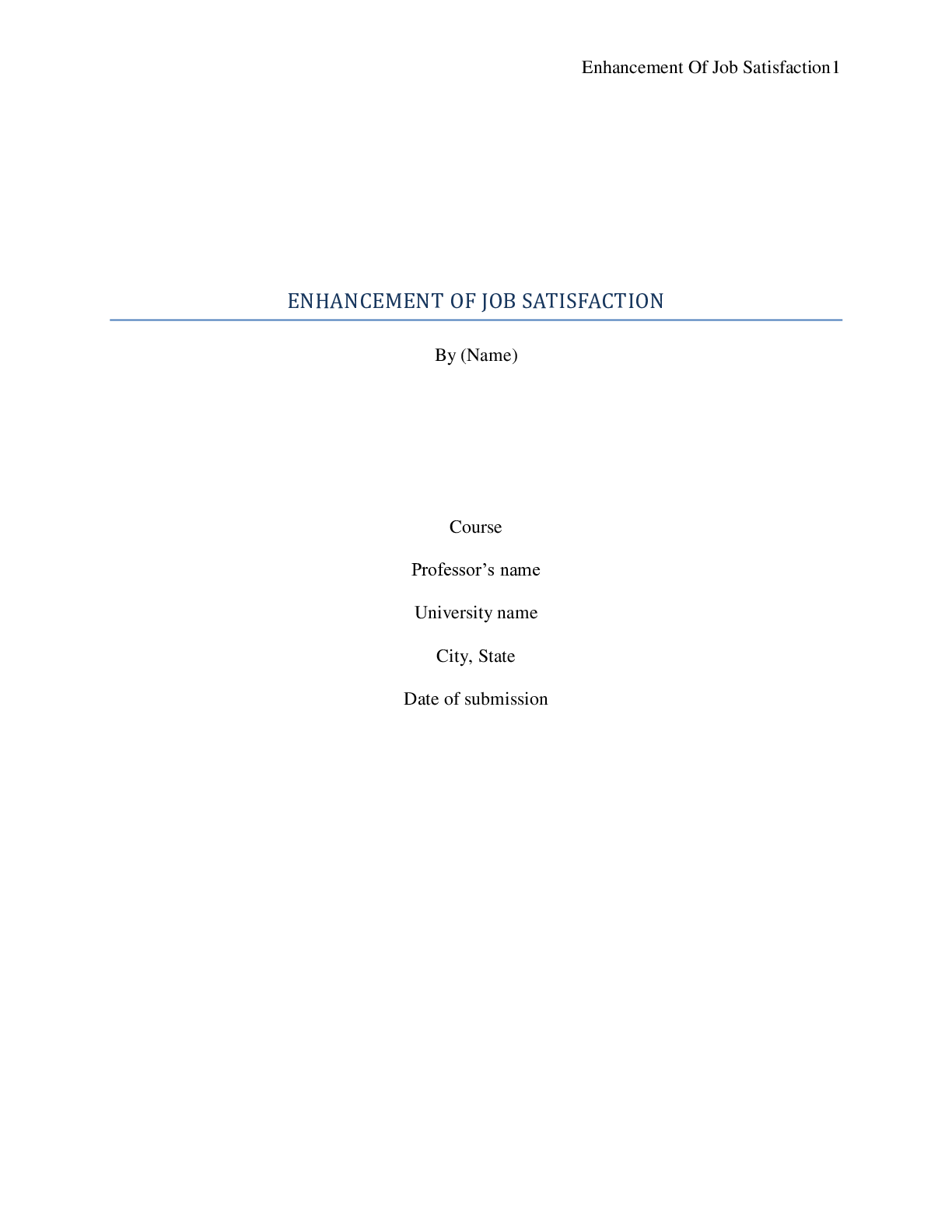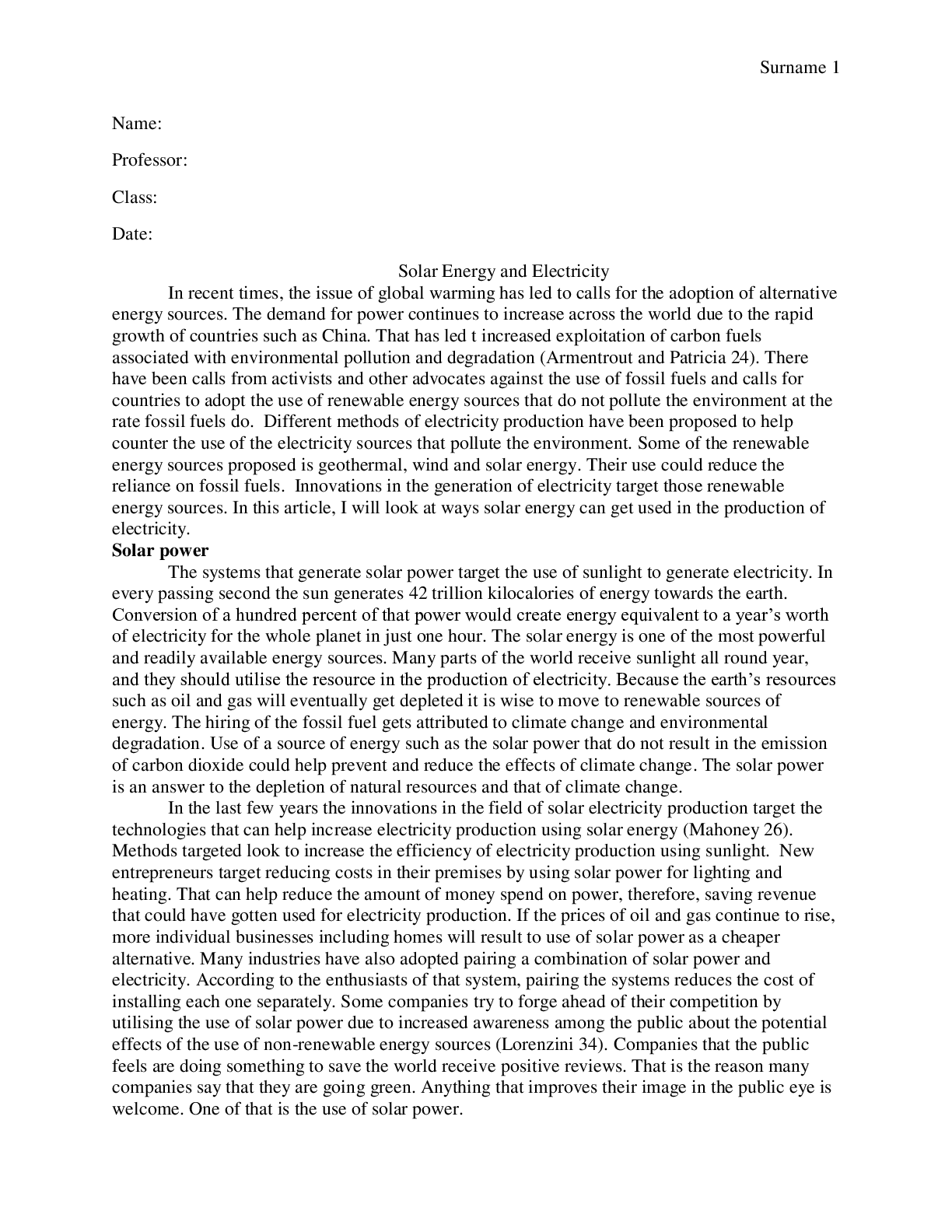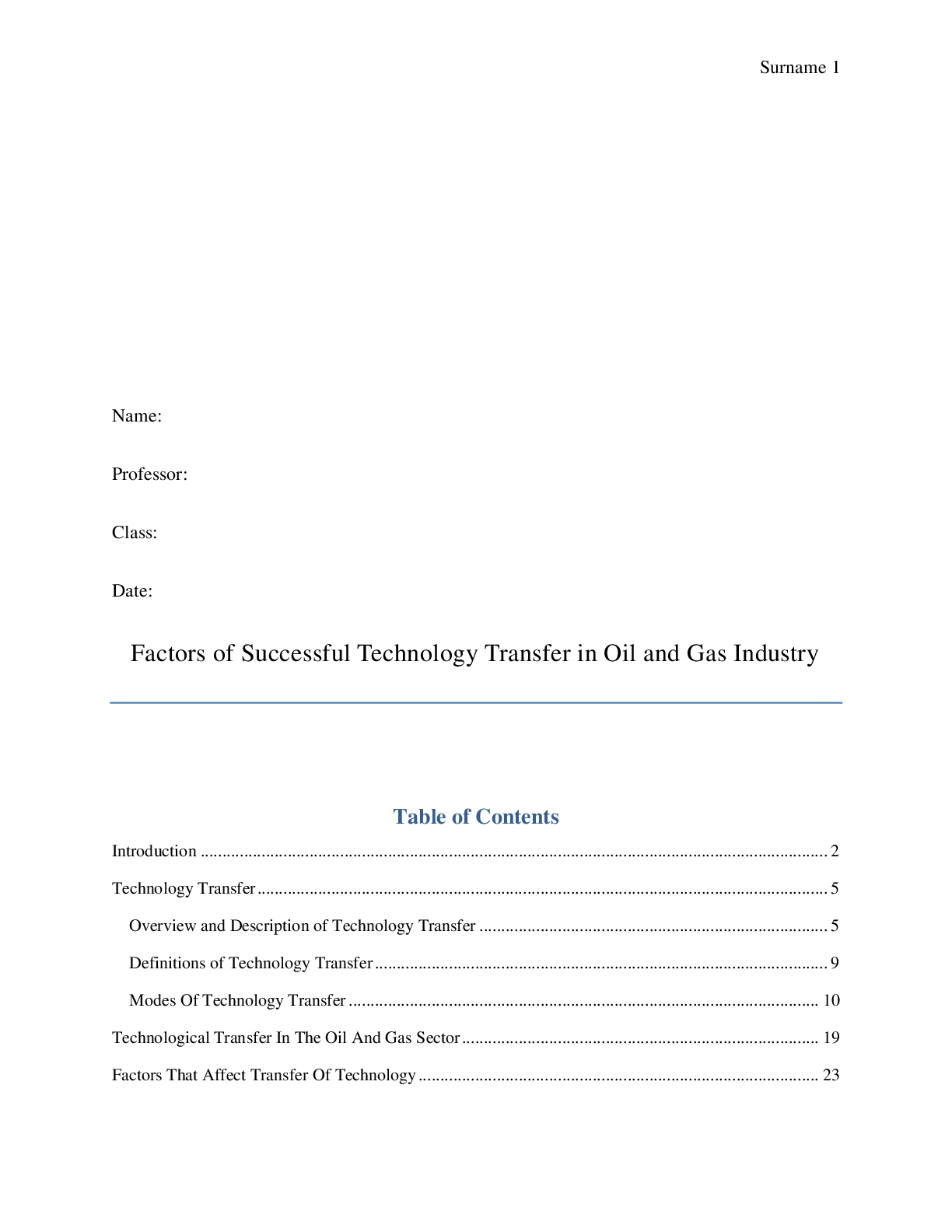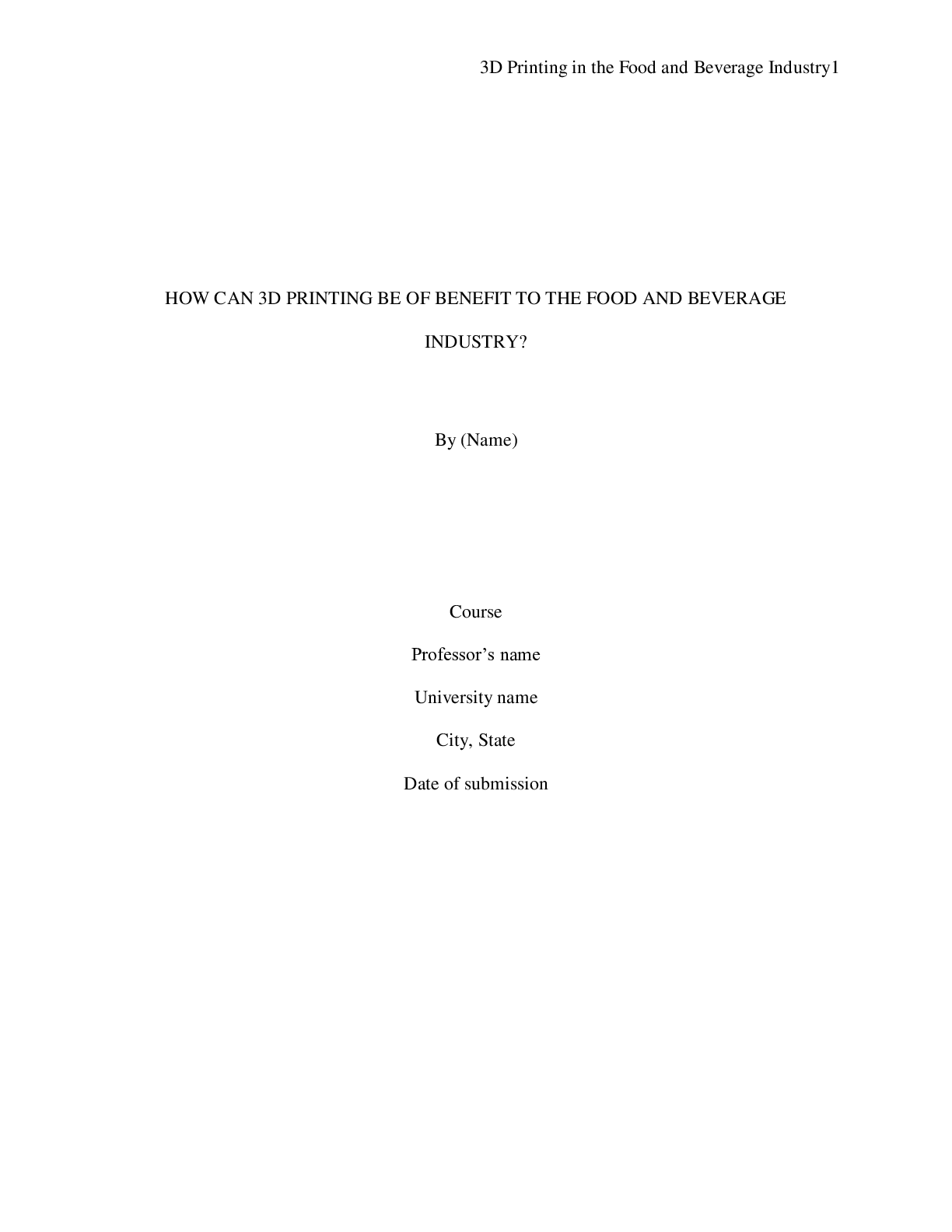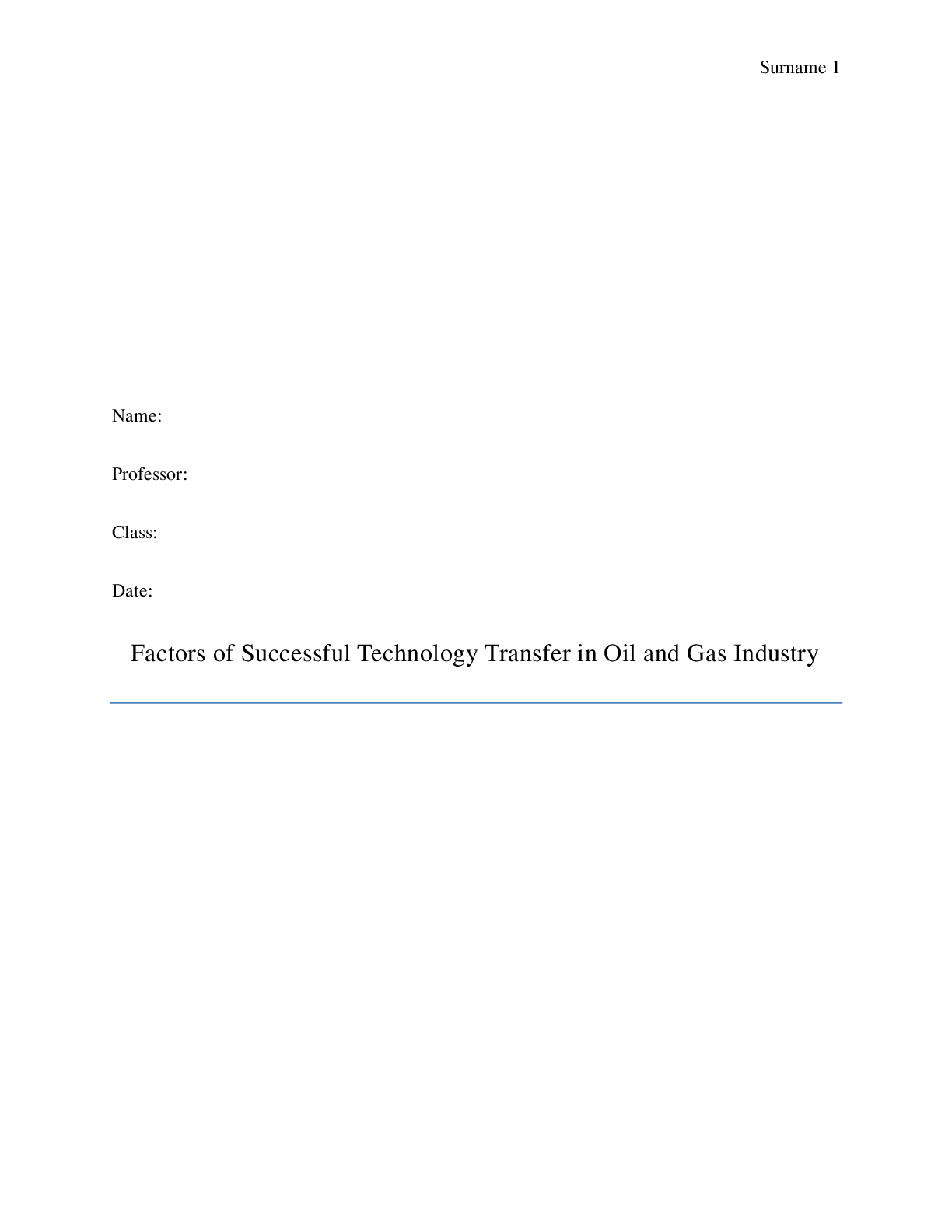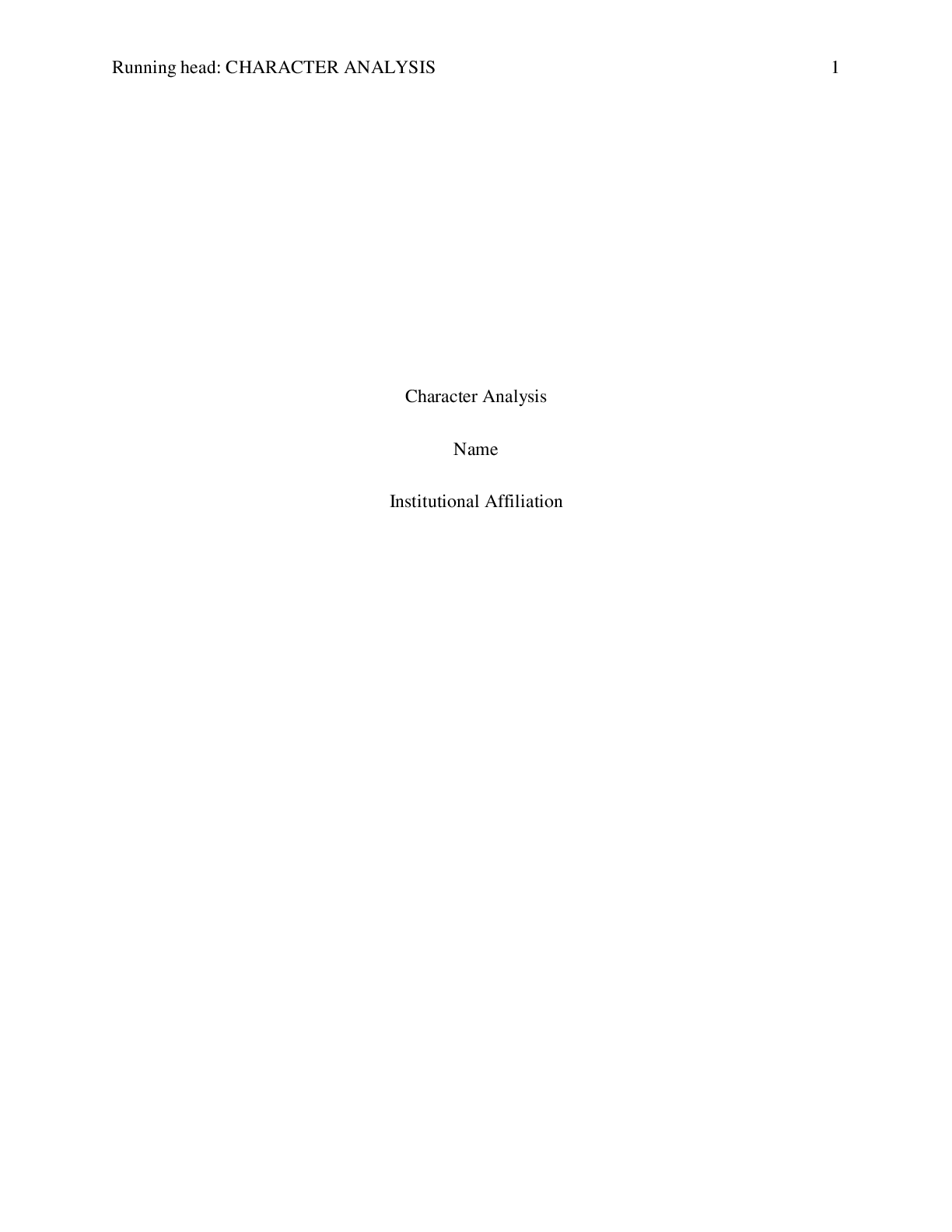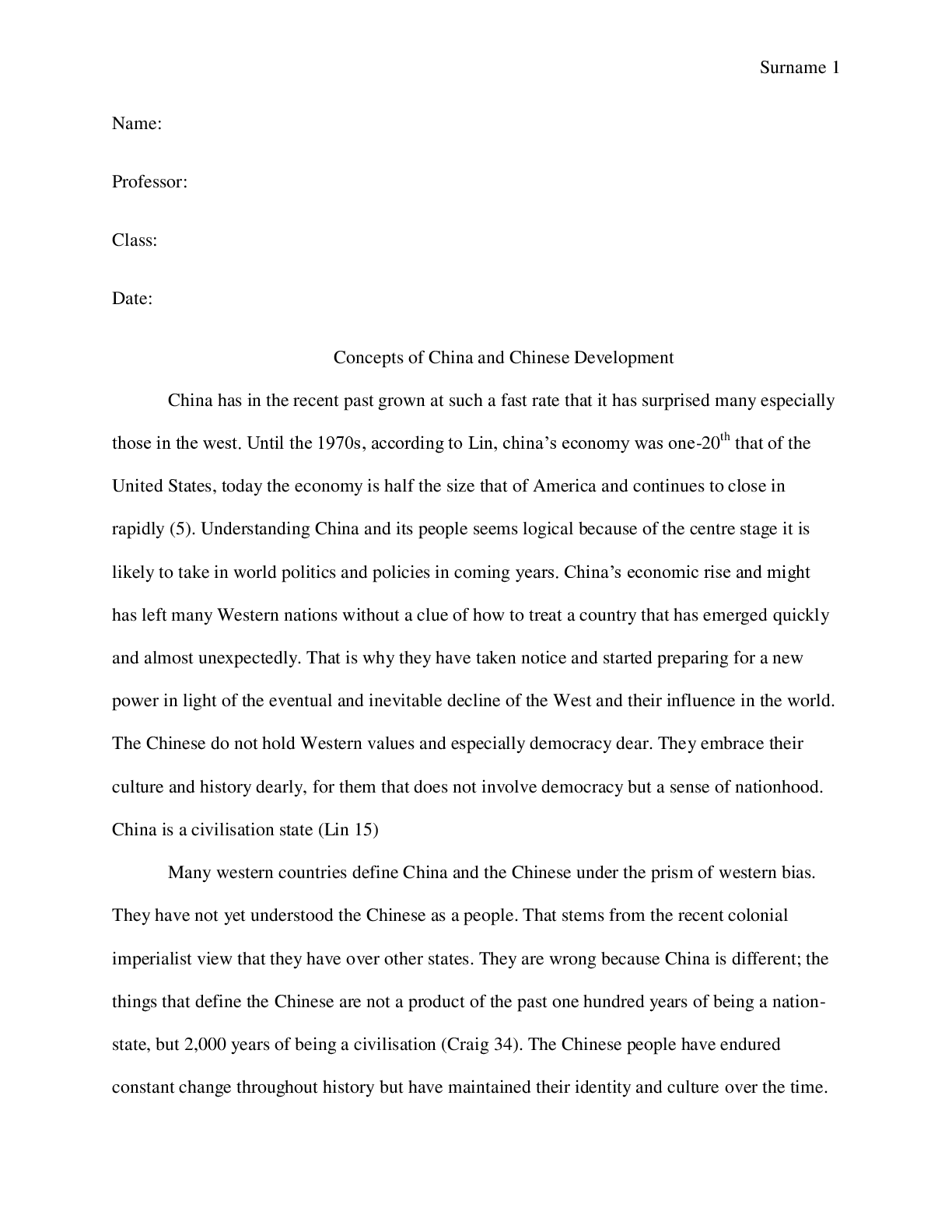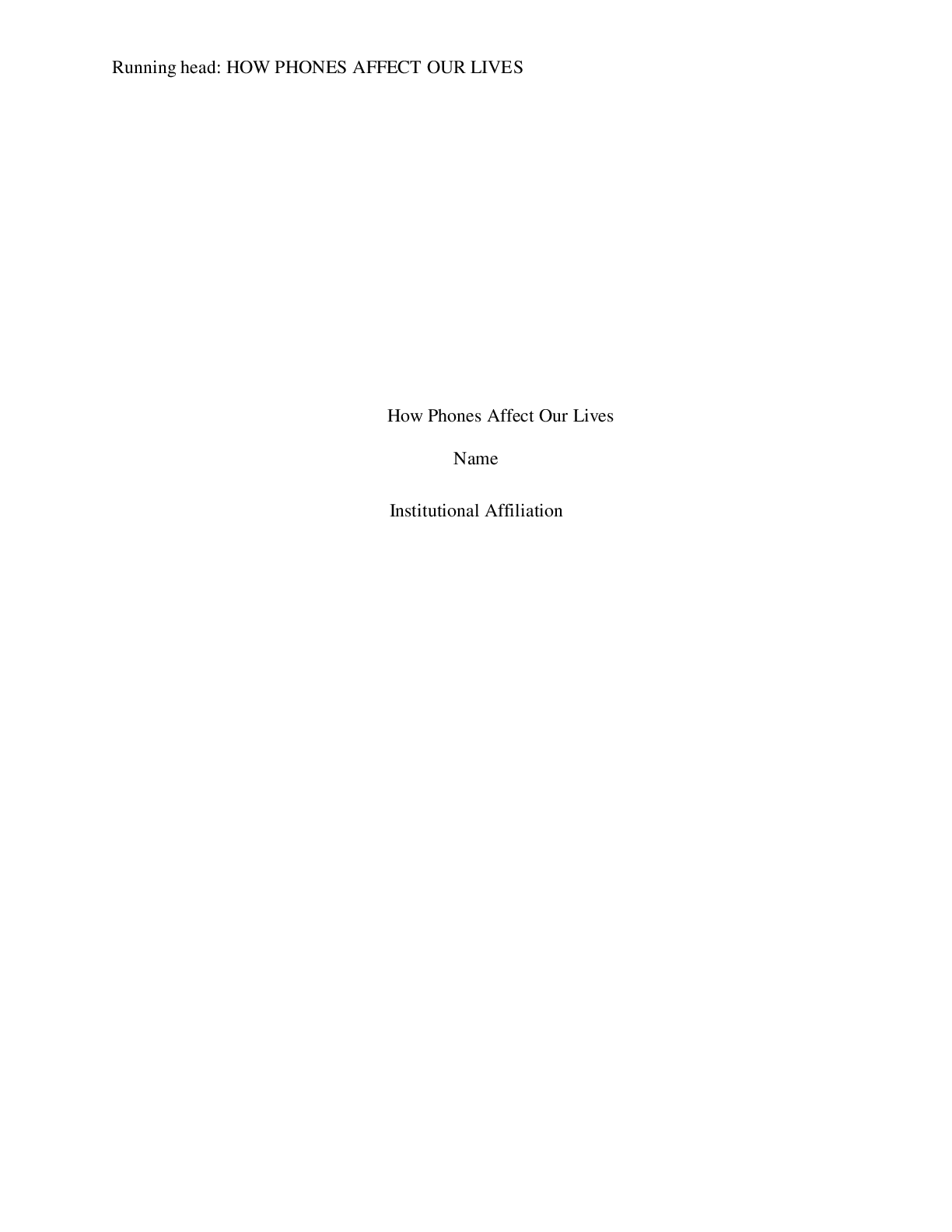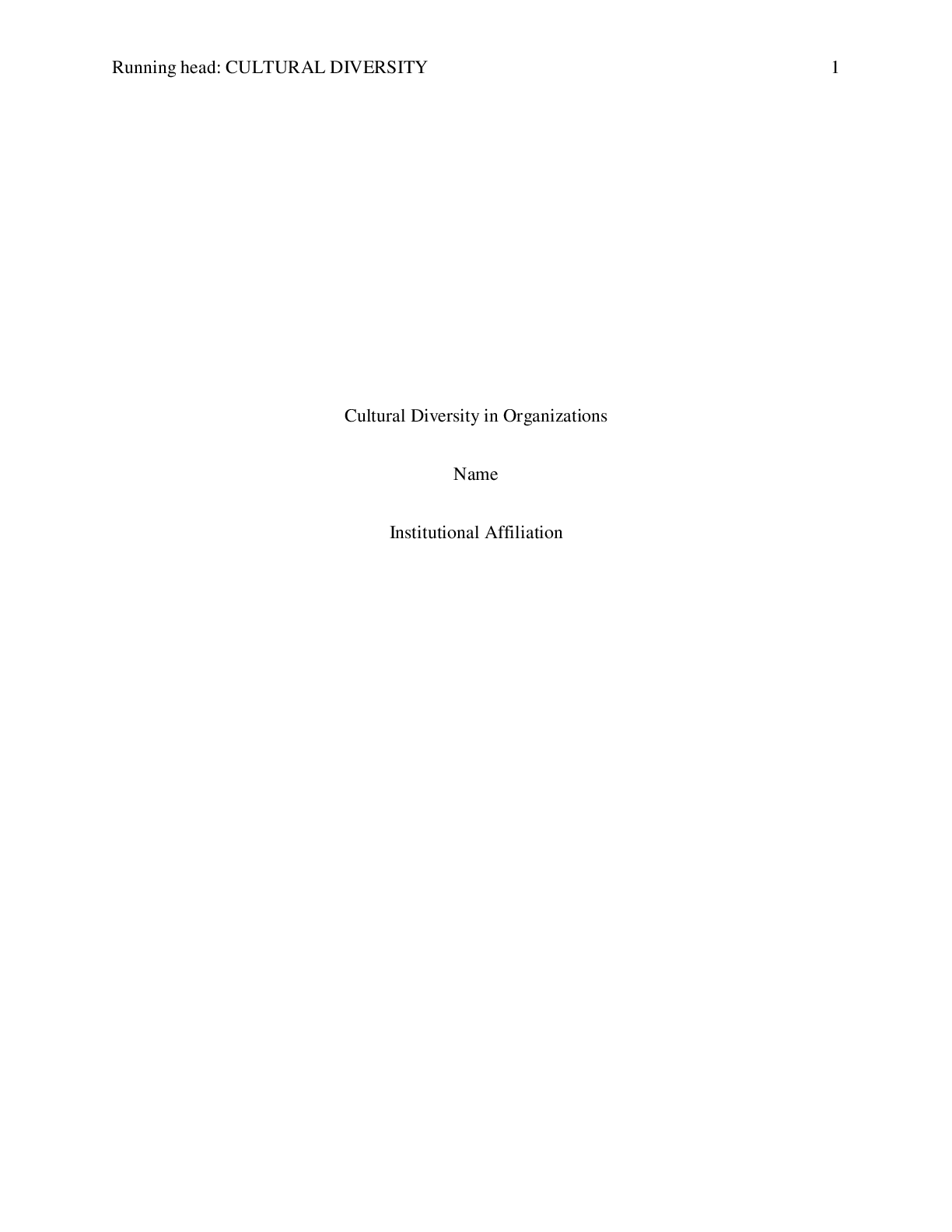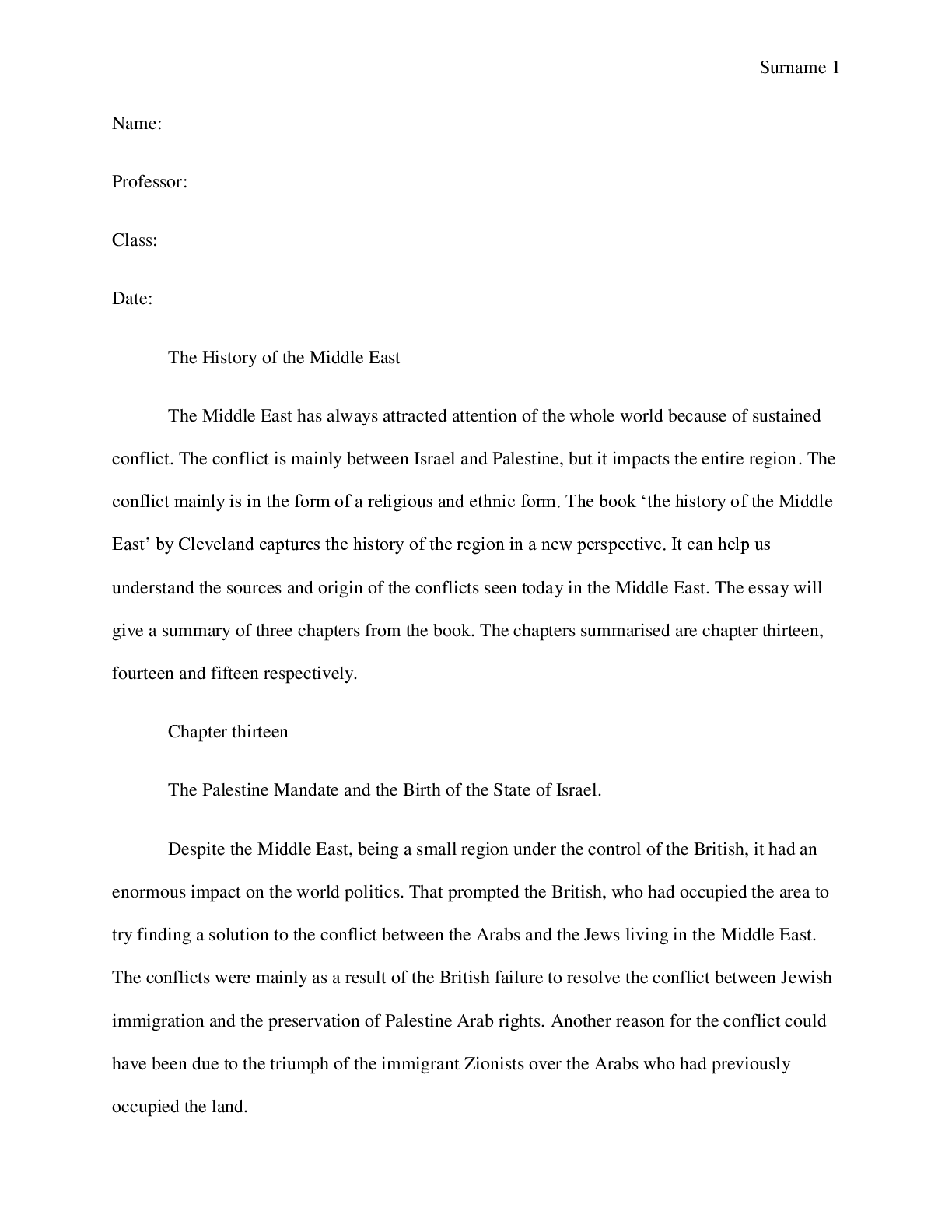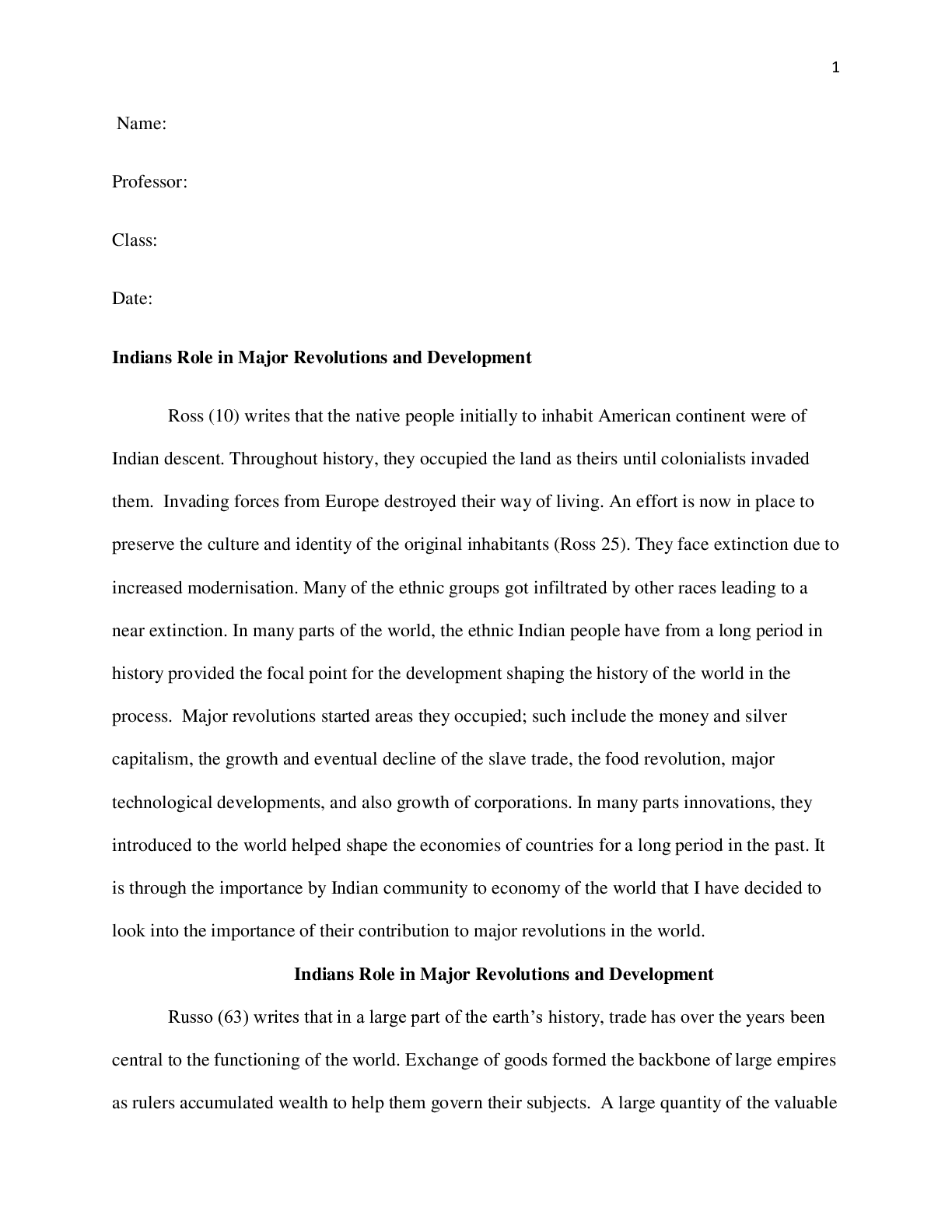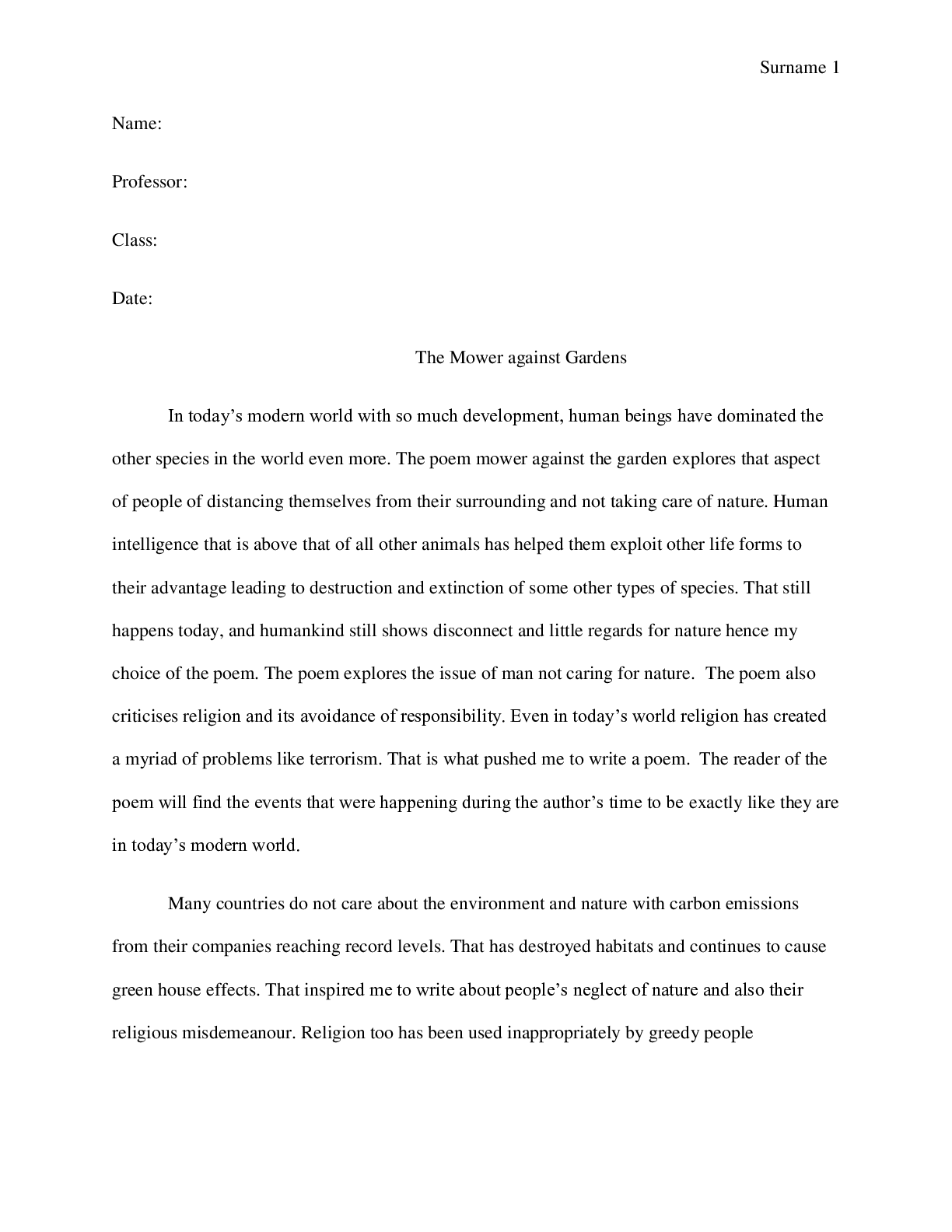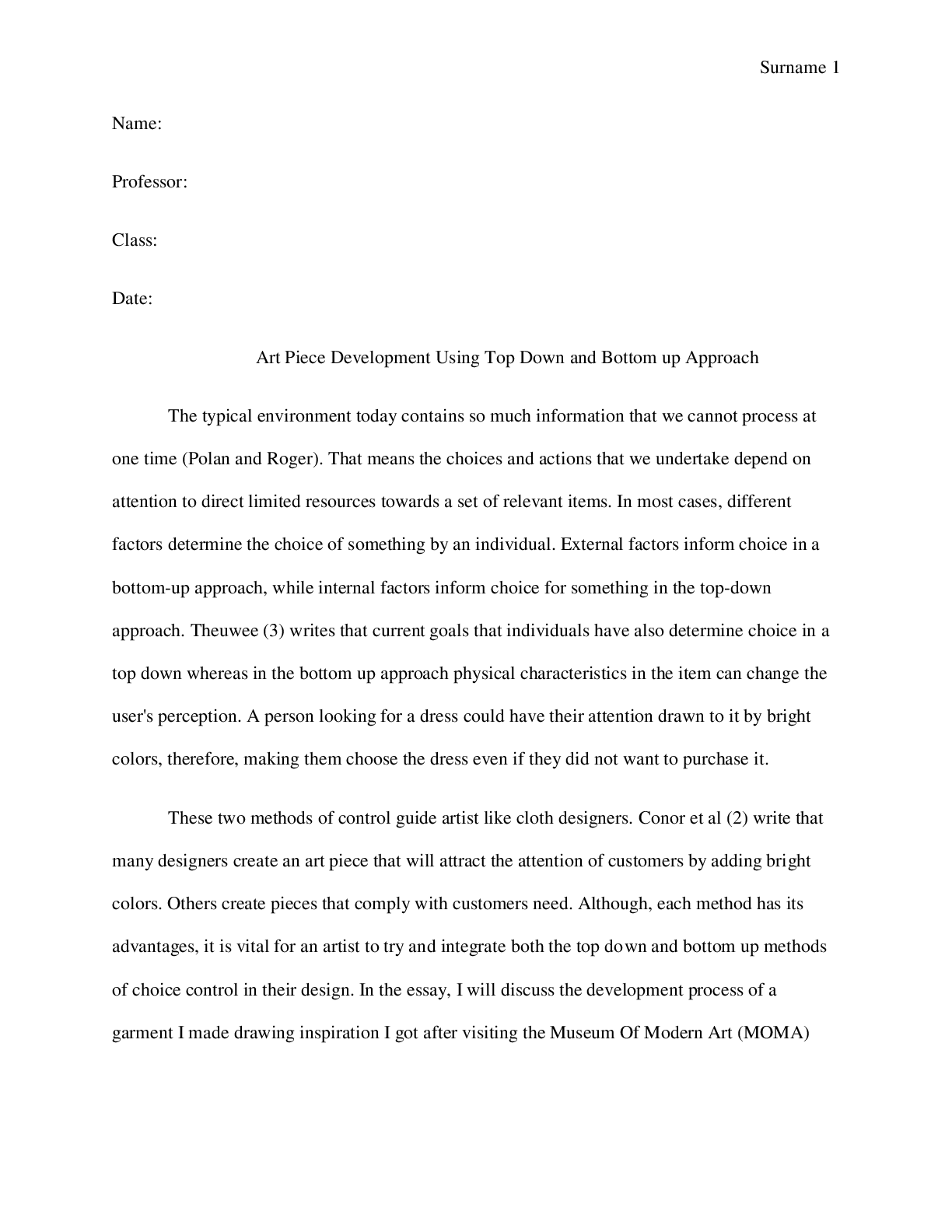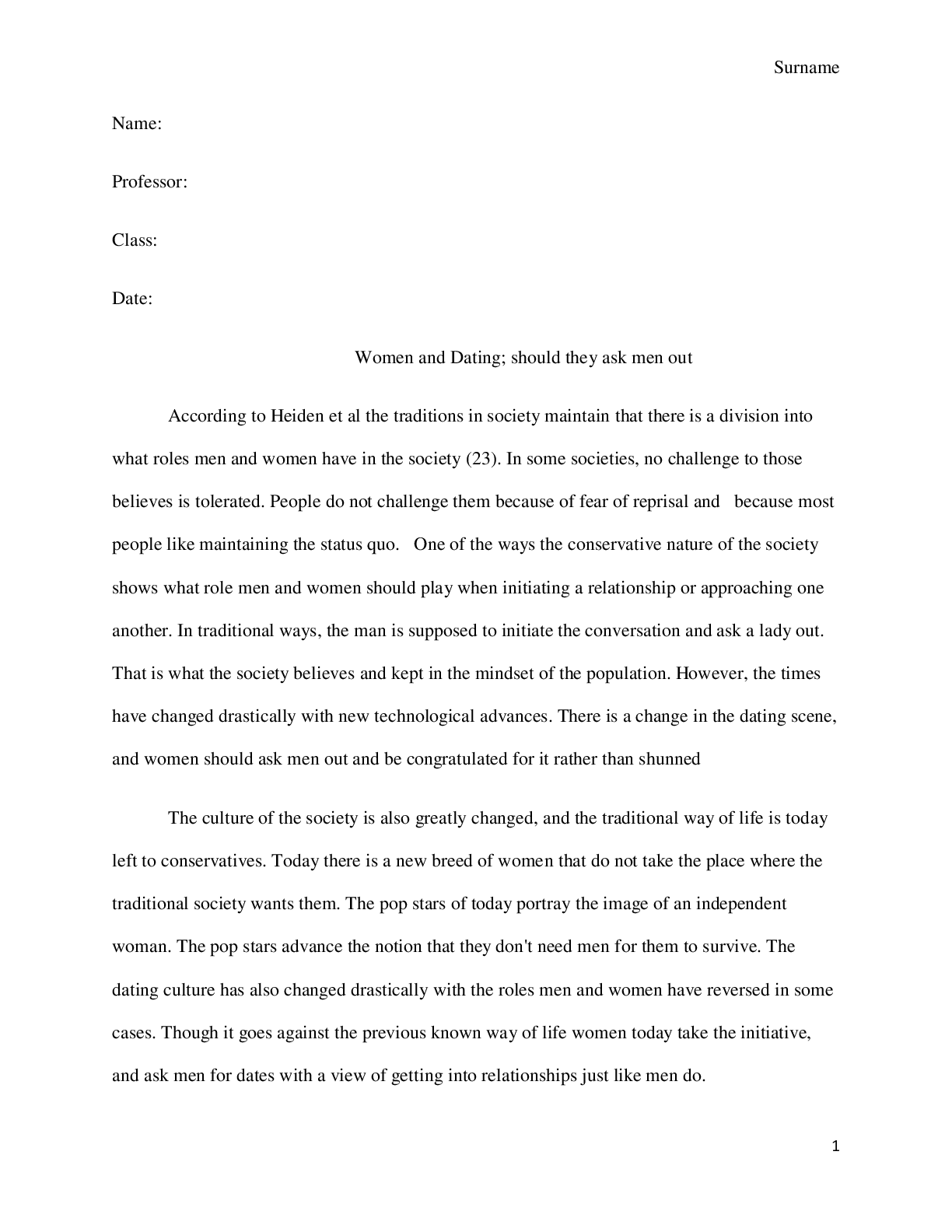*NURSING > ESSAY > Ohio University, AthensNURSING NR 507Discussion Part One week three nr 507 advanced pathophysiology (All)
Ohio University, AthensNURSING NR 507Discussion Part One week three nr 507 advanced pathophysiology
Document Content and Description Below
Discussion Part One (graded) A 17-year-old African American from the inner city complains of severe chest and abdominal pain. Upon examination the attending physician performs and EKG, chest x-ray, ... and an abdominal and chest clinical examination and finds nothing. Assuming, she is drug seeking he sends her home. She comes back to the ER 4 hours later and now you see the patient. She explains that she was running track this past afternoon at school and that despite being very hot (100 F) she pushed on. Afterwards, she starts feeling extensive pain in her chest and abdomen. She has jaundiced eyes, her blood pressure is 98/50, pulse is 112, T = 99.9 0F, R = 28. The pain seems out of proportion to the physical findings. What is your list of differential diagnoses in this case and explain how each of these fits with the case patient as described above. Be sure to list at least four (4) pertinent differential diagnoses. Indicate which of these you would select as the most likely diagnosis and explain why. Now, as she is in the ER she begins to exhibit stroke like features. ? Does this change your differential? How do you treat this patient now? Are they any preventative actions that could have been taken? Topic responses Discussion Expand All More Sort By: Courtney Barlow 9/11/2016 2:53:33 AM Discussion Part One Primary Diagnosis- Sickle Cell Anemia (Bakeer et al., 2016) Sickle cell anemia is a hereditary disease that destroys red blood cells by causing them to take on a rigid “sickle” shape. The disease is characterized by many of the symptoms of chronic anemia, fatigue, pale skin and shortness of breath. Other signs include increased risk of infection, jaundice and other eye problems and episodic crises of severe pain in the abdomen, bones, or muscles. Sickle cell anemia occurs mainly in persons of African descent. Sickle cell anemia is caused by a variant type of hemoglobin, the protein in red blood cells that carries oxygen to the tissues of the body, called hemoglobin S (HbS). HbS is sensitive to deficiency of oxygen. When the carrier red blood cells release their oxygen to the tissues and the oxygen concentration within those cells is reduced, HbS, in contrast to normal hemoglobin (HbA), becomes stacked within the red cells in filaments that twist into helical rods. These rods then cluster into parallel bundles that distort and elongate the cells, causing them to become rigid and assume a sickle shape. Normally, red blood cells are flexible and round, moving easily through the blood vessels. In sickle cell disease, red blood cells become rigid and sticky and shaped like sickles/crescent moons. These irregularities causes the cells to get stuck in small blood vessels, which can slow or block blood flow and decrease oxygen supply to parts of the body. Pain is the major symptom when the patient is in “crisis”. Pain develops when sickle-shaped red blood cells block blood flow through tiny blood vessels to your chest, abdomen and joints. Pain is sporadic and can last for hours or weeks. Continued poor oxygen supply to organs may eventually lead to organ damage. Stroke is a common manifestation of the disease because of blood flow obstruction. In some cases blood transfusions are given regularly to prevent organ damage and stroke and to relieve the worst symptoms of red blood cell loss. This diagnosis fits the patient’s presentation and her experiencing signs of stroke are one of the symptoms of the disease. Hemolytic Anemia- (Prabhu, Bhaskaran, Shenoy & Sidharthan, 2016) Hemolysis is the premature destruction of red blood cells. A hemolytic anemia will develop if bone marrow activity cannot compensate for the red blood cell loss. These cells carry oxygen to the body and are formed in the bone marrow. They live for approximately 120 days and then die. When blood cells die, the marrow normally will replace them. However, in hemolytic anemia the marrow cannot make enough to meet the needs of the body. Anemia is when the blood has lower than normal amount of red blood cells. Hemoglobin is an iron-rich protein that carries oxygen from the lungs to the rest of the body. Hemolysis can be due to hereditary and acquired disorders. Acquired hemolytic anemia may be caused by immunemediated causes, drugs and other miscellaneous causes. There is a genetic component also. Symptoms of hemolytic anemia are similar to other forms of anemia with symptoms including pale skin and shortness of breath. In addition, the breakdown of red cells leads to jaundice and increases the risk of particular long-term complications, such as gallstones andpulmonary hypertension. The continuous release of free hemoglobin has been linked with the development of pulmonary hypertension; this an lead to episodes of syncope, chest pain, and progressive breathlessness The hemoglobin breaks down into bilirubin, and that gives the eyes the yellowish color and skin. Even though patient exhibits a lot of these symptoms, hemolytic anemia also does not lead to stroke like symptoms. Glucose-6-dehydrogenase Deficiency (G6PD)- (Luzzatto, Nannelli & Notaro, 2016) G6PD deficiency occurs when a person is missing or does not have enough of an enzyme called glucose-6-phosphate dehydrogenase. This enzyme helps red blood cells work properly. G6PD is a hereditary type of hemolytic anemia in which red blood cells break down when the body is exposed to certain drugs or the stress of infection. It is common between Mediterranean and African origin and the most common human enzyme defect. There is no specific treatment, other than avoiding known triggers. Symptoms include jaundice, fever, fatigue, tachycardia and abdominal pain from splenomegaly and hyperbilirubinimia. Her strenuous work out could have led to an exacerbation. Although some of the symptoms fit the case study, patients with G6PD do not experience chest pain. Also the pain experienced in patients with this disease are not as severe as the one described in the case study. This disease also does not lead to stroke symptoms. Cholelithiasis/Cholangitis- (Shapiro et al., 2013) Cholelithiasis with acute cholangitis fits the presentation based on the patient’s symptoms of abdominal pain, jaundice and mildly septic state. Acute cholecystitis can be defined as an acute inflammatory disease of the gallbladder, often caused by gallstones. 50-70% of patients present with classic triad of jaundice, fever and right upper quadrant pain. Severe acute cholangitis is acute cholangitis associated with at least one of cardiovascular, neurological, respiratory, renal, hepatic and/or hematological dysfunction. Gallstones are commonly two types: cholesterol and pigmented. Cholesterol gallstones form in bile that is supersaturated with cholesterol produced by the liver. It is unknown why the hepatocytes secrete bile that is supersaturated with cholesterol. Pigmented stones are either black or brown in nature. Black stones are associated with hyperbilirubinbilia and hemolytic diseases such as sickle cell. Brown stones are associated with bacterial infection of the bile ducts. In some cases, gallstones can cause biliary obstruction leading to inflammation and infection in the bile ducts. Infection is presumably acquired from bacteria ascending from the biliary junction with the duodenum. Typical clinical presentation of cholangitis includes right upper quadrant abdominal pain, fever and jaundice. She does present with elevated temperature, mild hypotension and tachycardia, and tachypnea which can appear to be an early sign of sepsis by fitting SIRS criteria. The patients abdominal pain presents as diffuse with associated chest pain, which is not necessarily seen with cholangitis. However her chest pain can be associated with referred pain. The patient would not present with stoke symptoms with this diagnosis [Show More]
Last updated: 1 year ago
Preview 1 out of 67 pages
.png)
Reviews( 0 )
Document information
Connected school, study & course
About the document
Uploaded On
Sep 26, 2021
Number of pages
67
Written in
Additional information
This document has been written for:
Uploaded
Sep 26, 2021
Downloads
0
Views
89


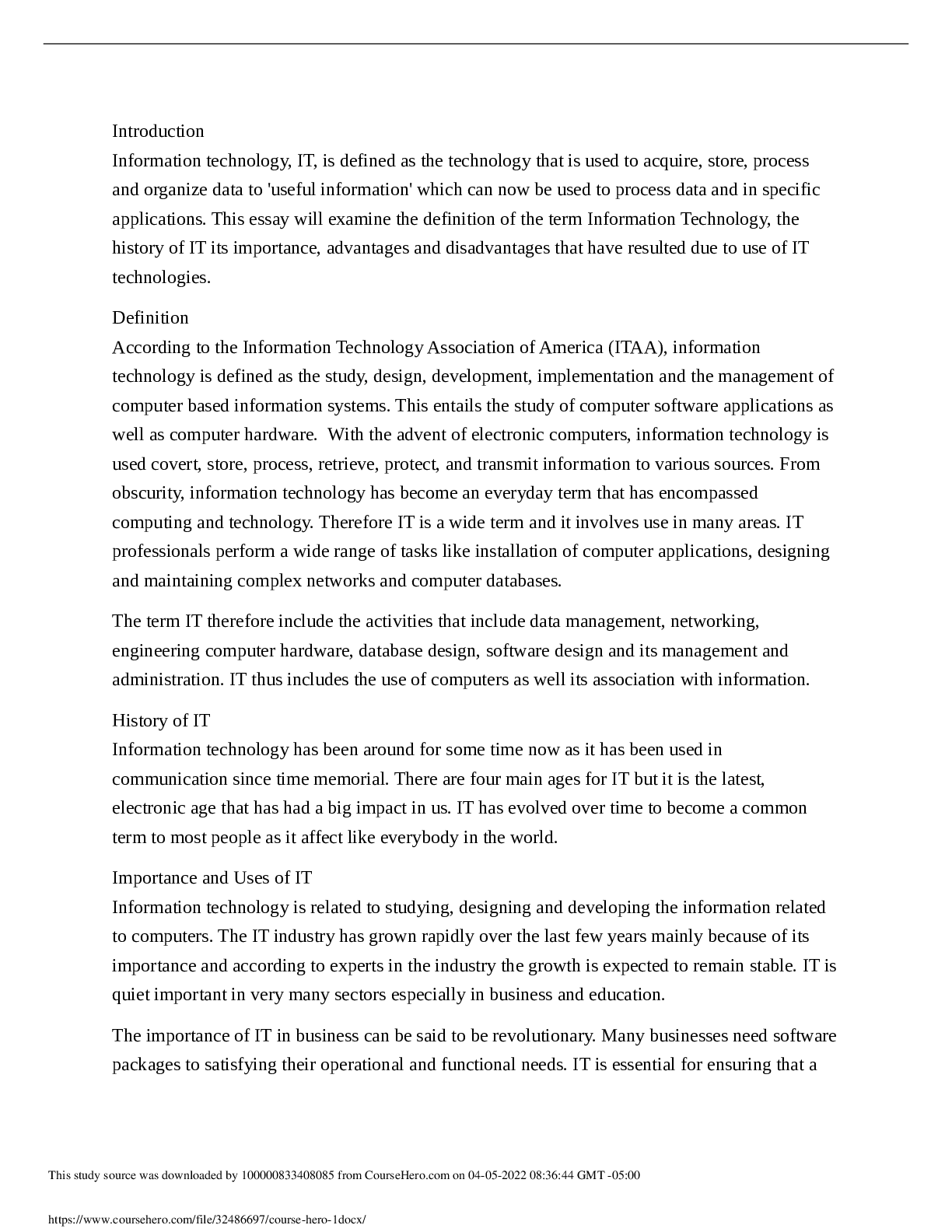
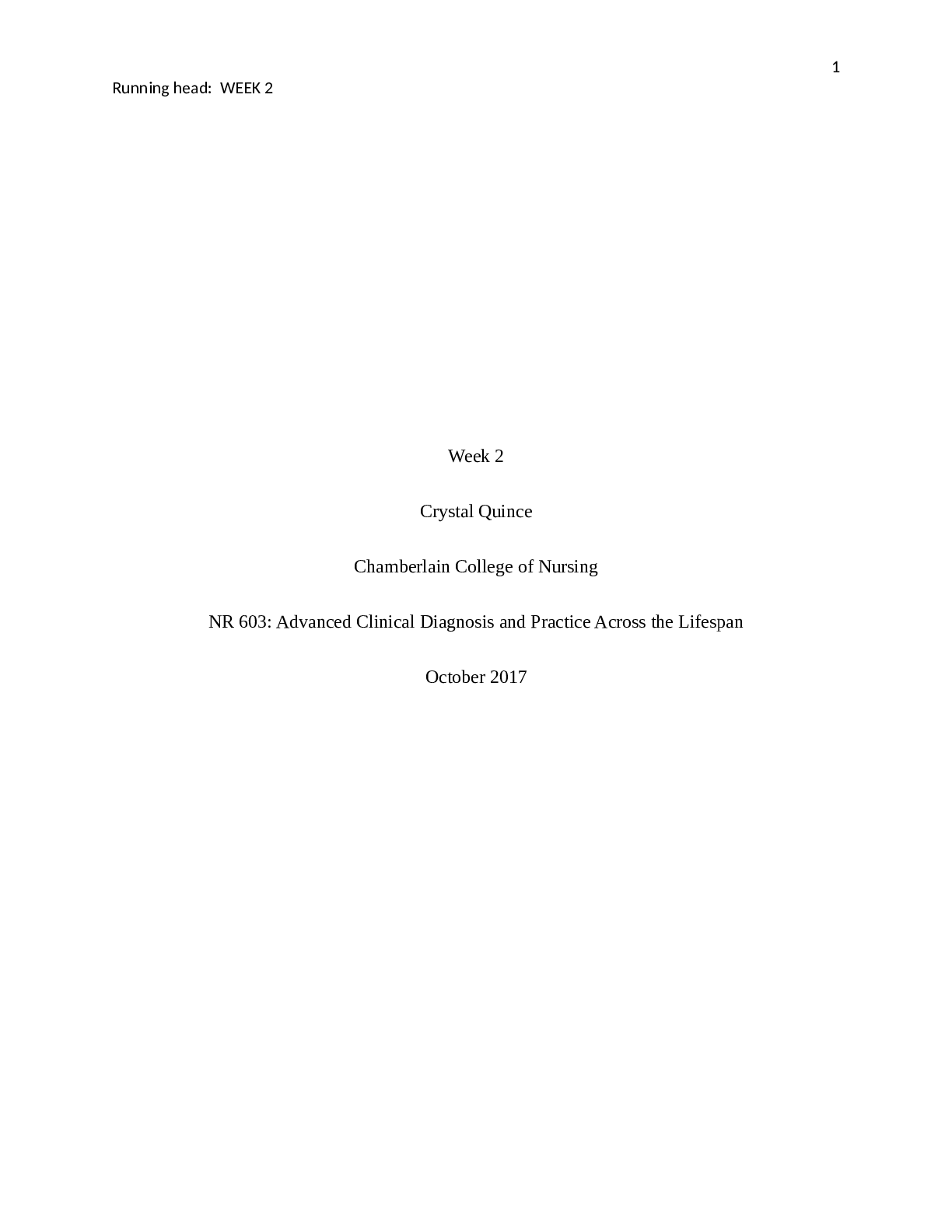
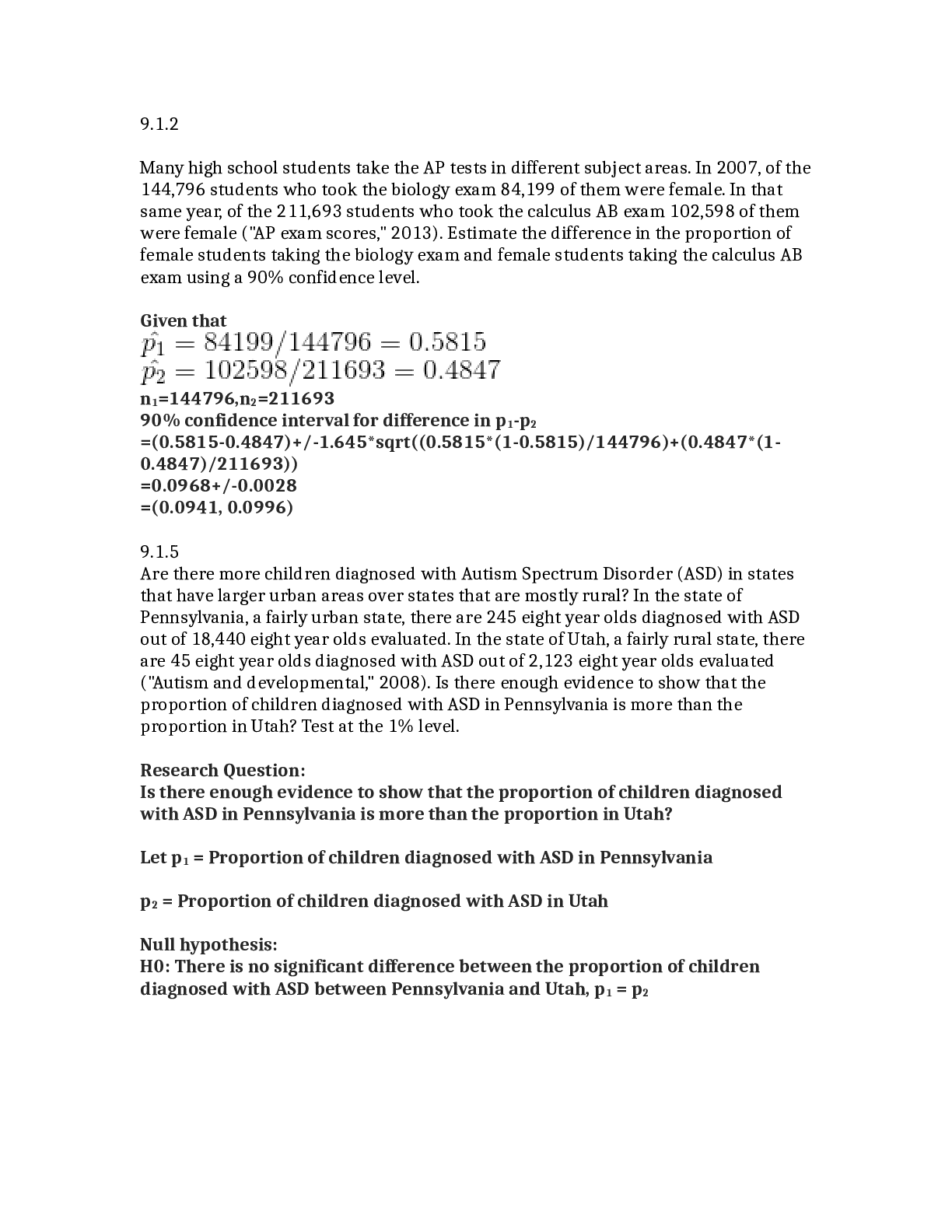
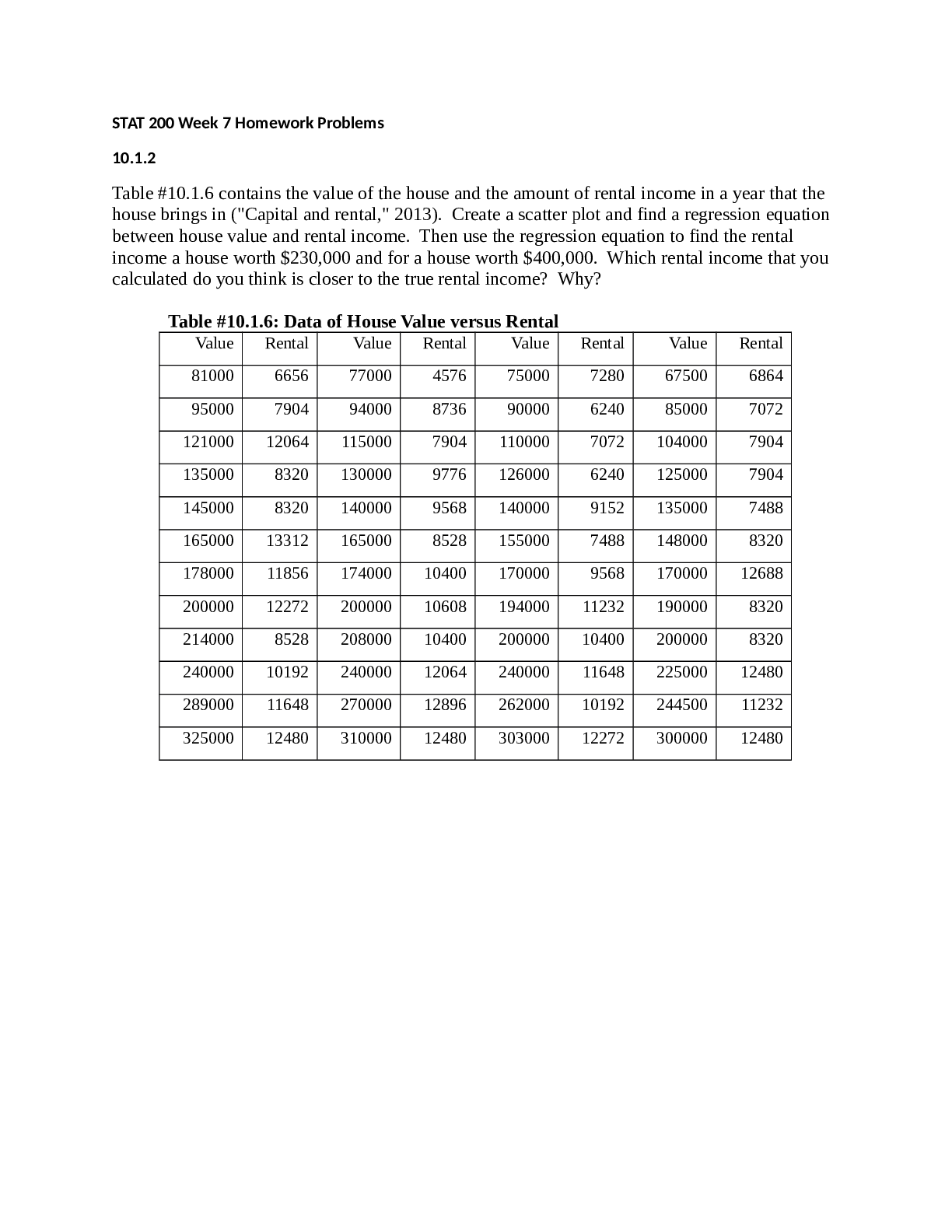
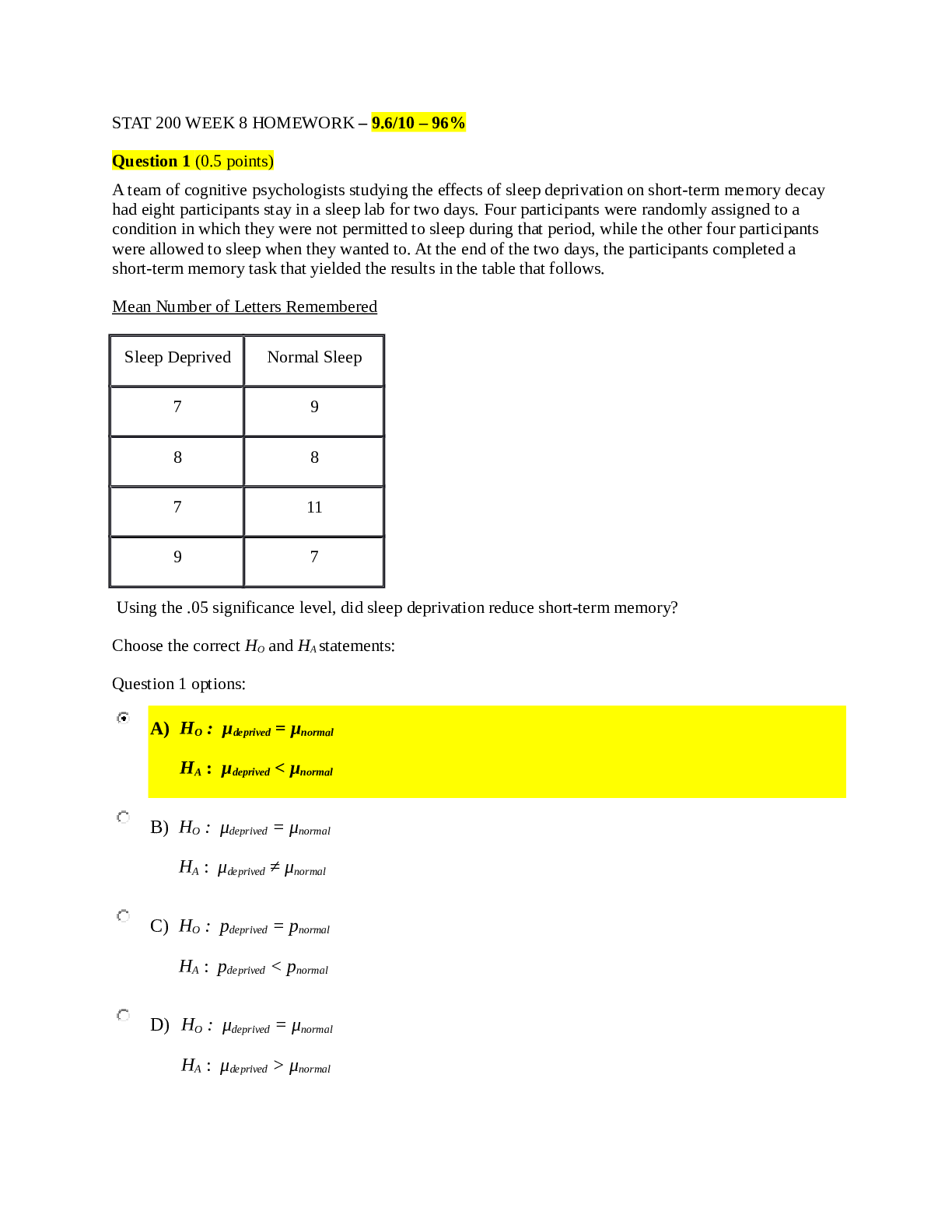
.png)
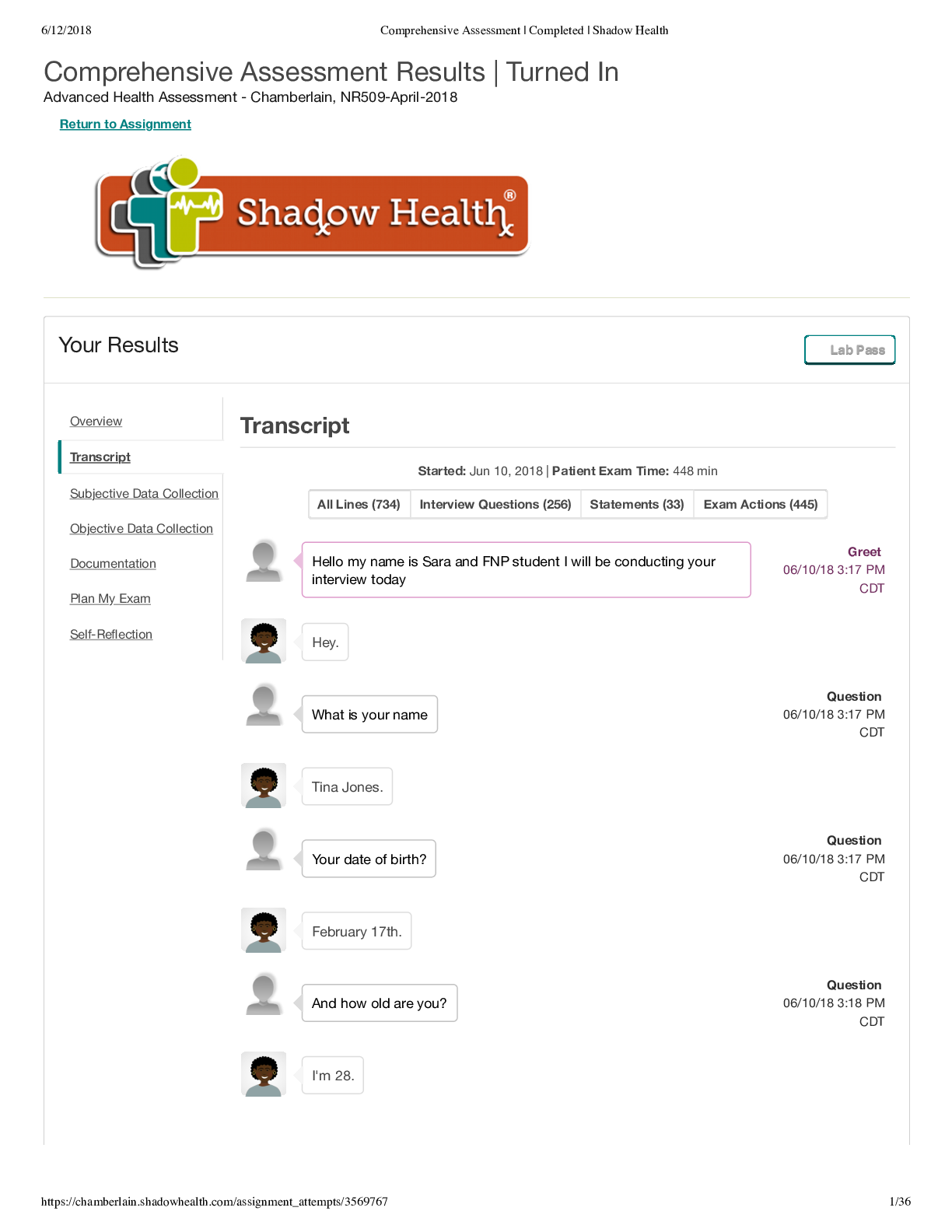
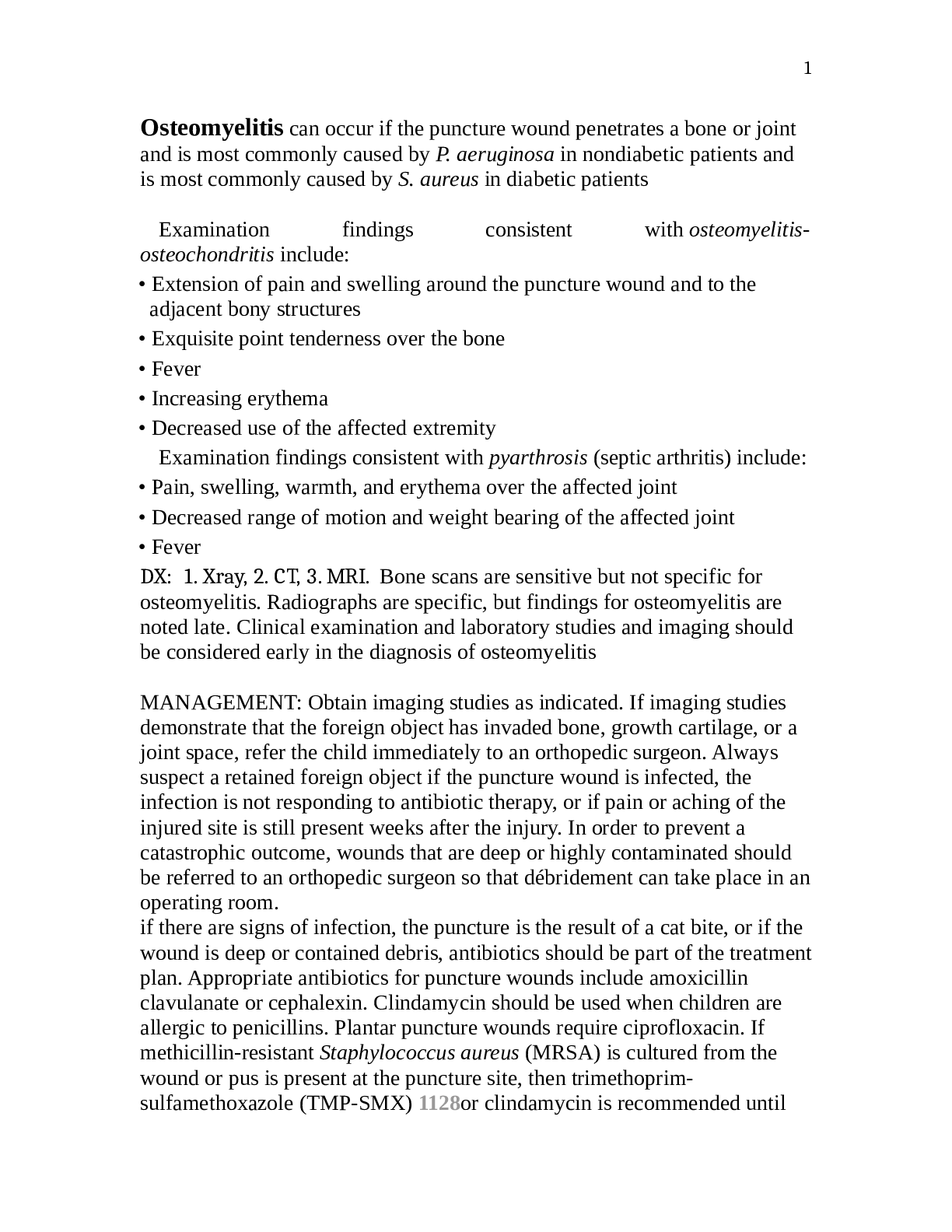
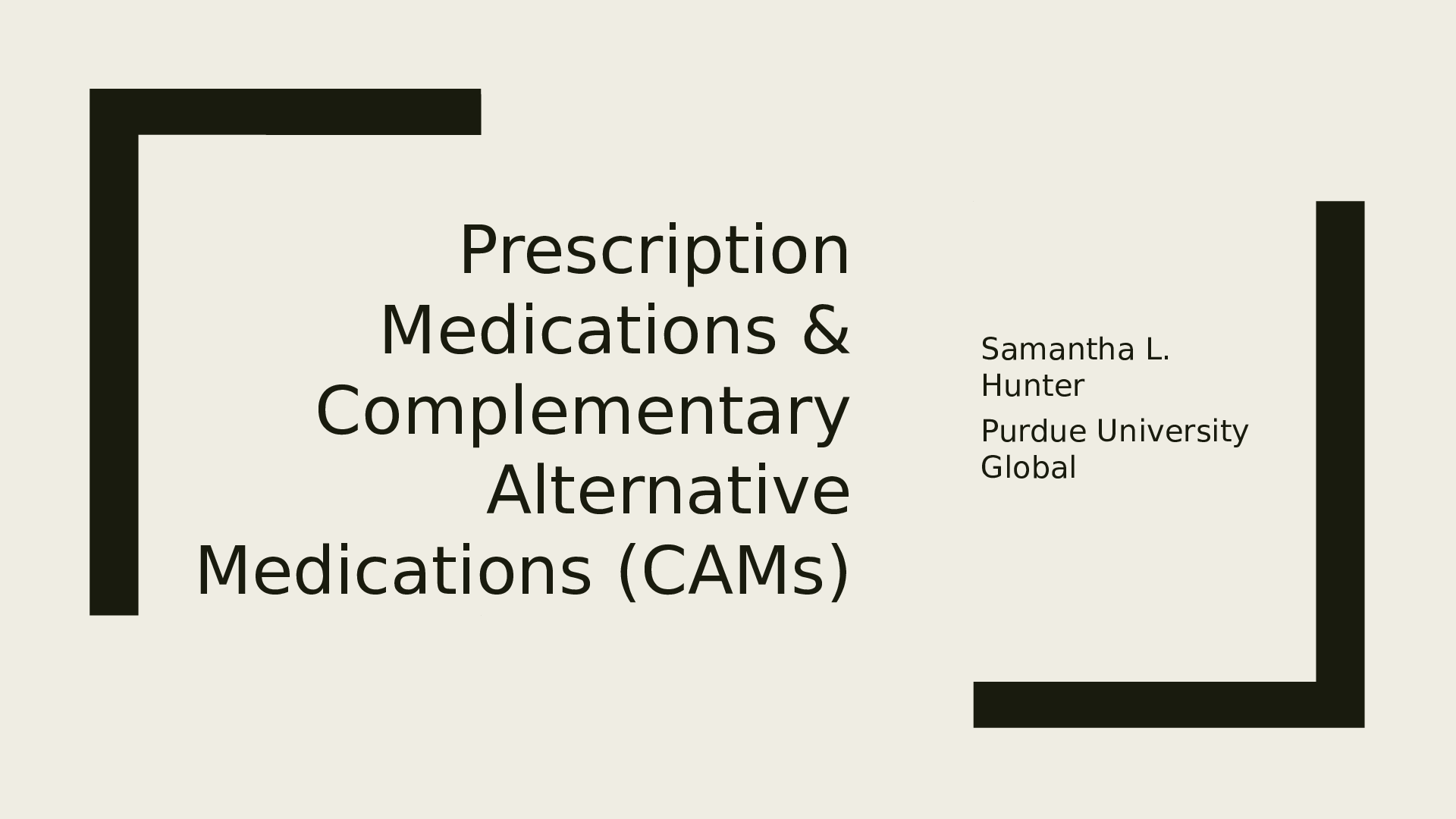
.png)
.png)
.png)
.png)
.png)
